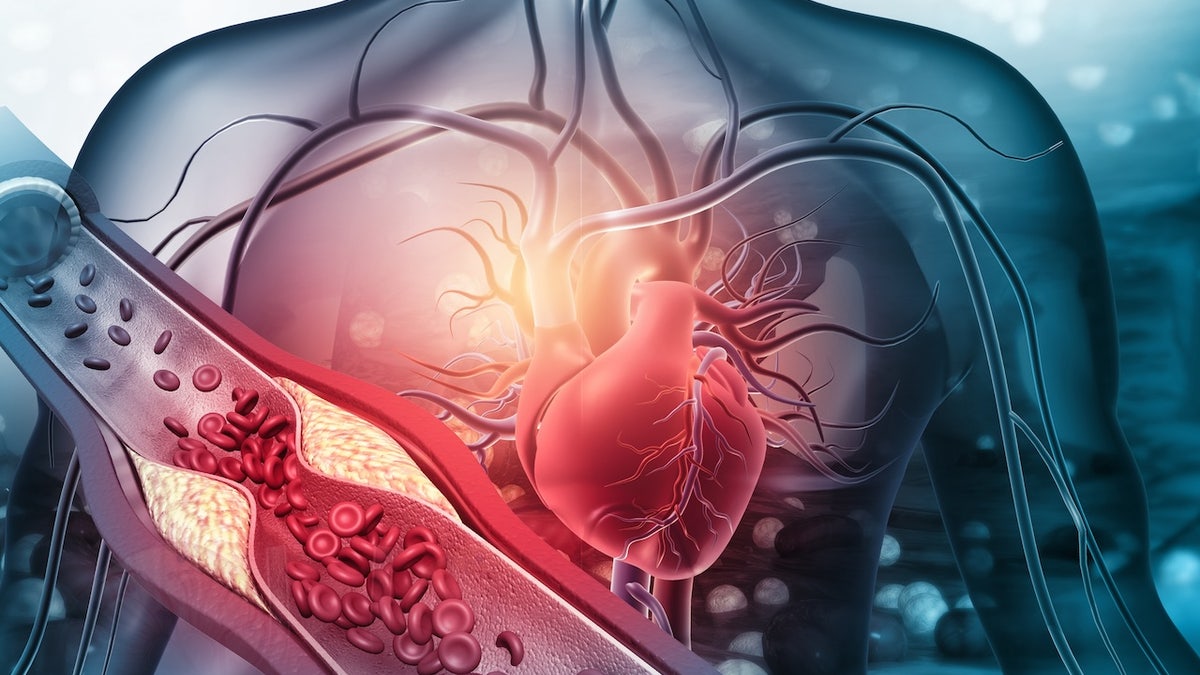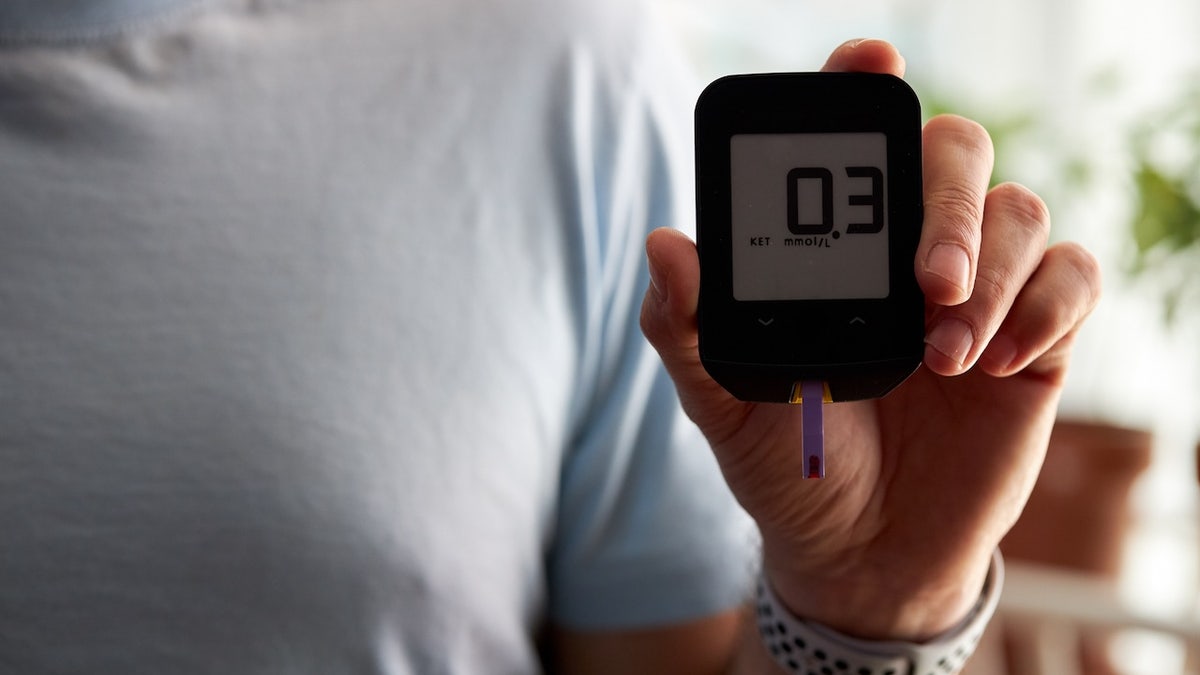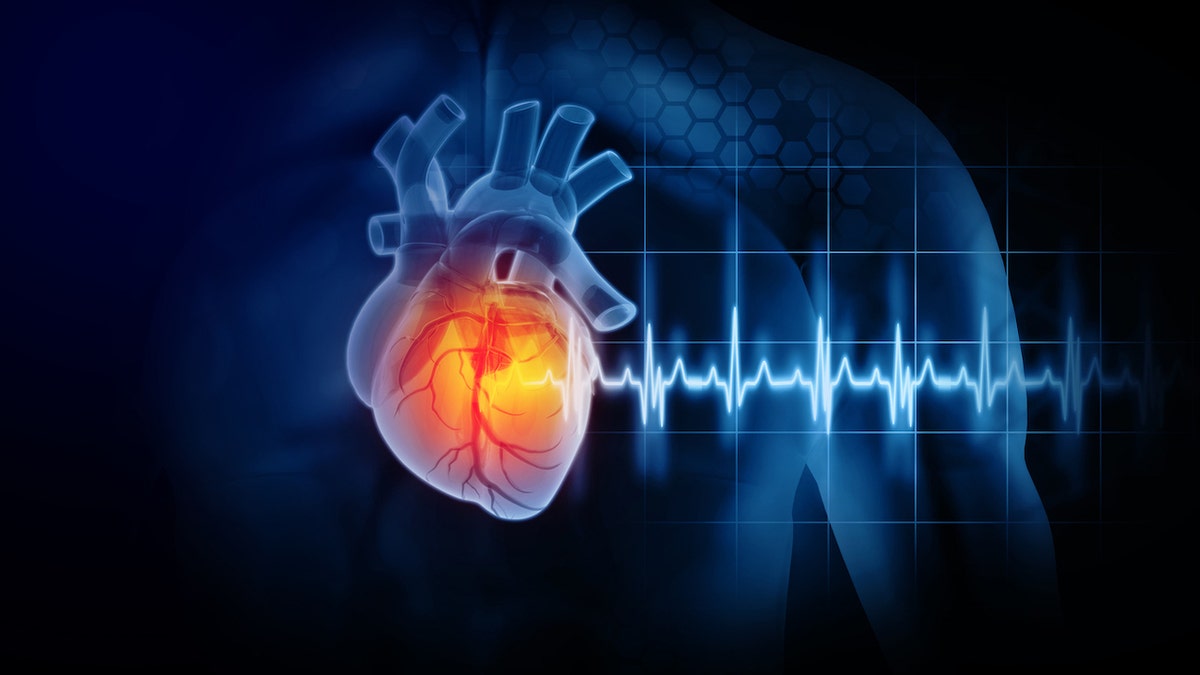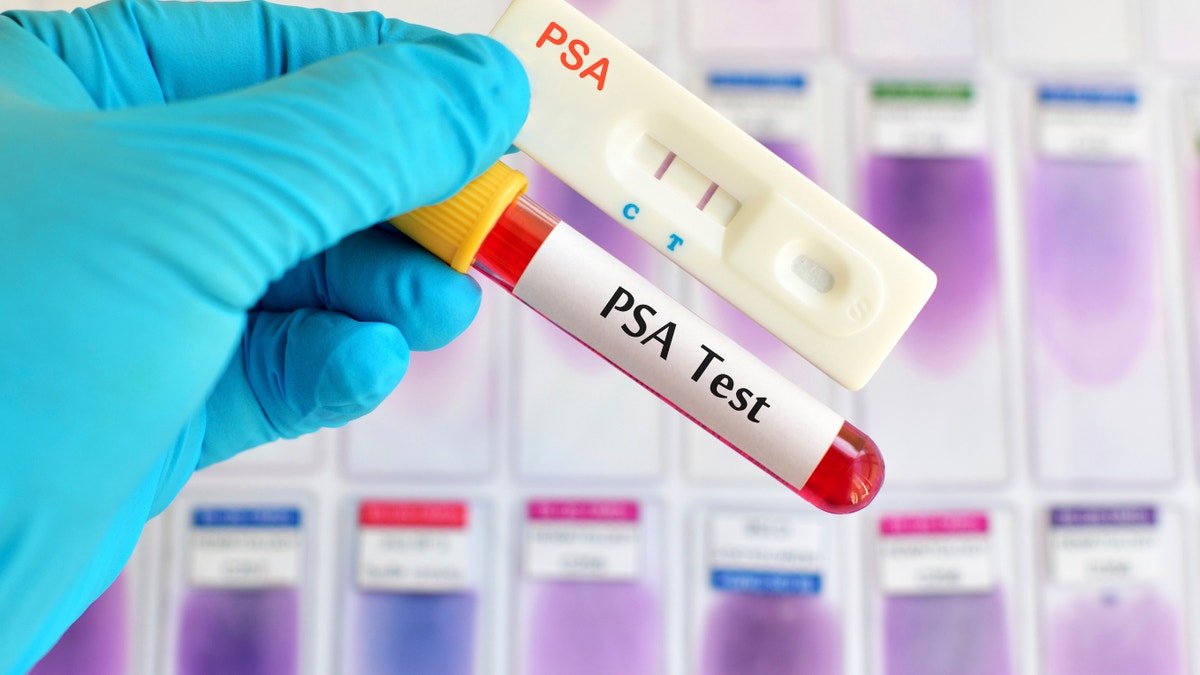Health
Low-carb keto diet may not raise heart disease risk, new study suggests

High cholesterol has long gotten a bad rap for causing poor heart health — but a new study suggests that the low-carb ketogenic diet may not be linked to cardiovascular disease.
The study, led by The Lundquist Institute for Biomedical Innovation at Harbor-UCLA Medical Center in collaboration with researchers across multiple institutes, assessed 100 participants following a long-term keto diet who developed elevated levels of LDL cholesterol (known as the “bad” type).
Other than the elevated cholesterol, all participants were “metabolically healthy” and had followed the key diet for an average of five years, according to an April 7 press release.
HEART DISEASE RISK HIGHER FOR WOMEN WHO HAVE THESE UNHEALTHY LIFESTYLE HABITS
They all qualified as LMHR (lean mass hyper-responder), which indicates people who adopt a carbohydrate-restricted diet and experience a significant rise in cholesterol.
High cholesterol has long gotten a bad rap for causing poor heart health — but a new study suggests that the low-carb ketogenic diet may not be linked to cardiovascular disease. (iStock)
Using advanced cardiac imaging, the researchers found that traditional cholesterol markers (ApoB and LDL-C) were not associated with changes in plaque levels in the heart’s arteries or with baseline heart disease over a one-year period.
Instead, existing plaque levels seemed to be a better predictor of future plaque accumulation.
“This population of people — metabolically healthy with elevated LDL due to being in ketosis — are not automatically at increased cardiac risk simply because their LDL is elevated,” Bret Scher, MD, medical director of Baszucki Group, which provided funding for the study, told Fox News Digital.
‘I’M A HEART SURGEON AND THIS IS WHAT I COOK FOR DINNER’
“Therefore, we should likely shift away from LDL and ApoB and toward vascular imaging with CAC or CTA for better risk prediction and informing how or if to treat someone’s cardiac risk factors,” added the California-based doctor.
The study findings were published in the Journal of the American College of Cardiology: Advances.

Using advanced cardiac imaging, the researchers found that traditional cholesterol markers (ApoB and LDL-C) were not associated with changes in plaque levels in the heart’s arteries or with baseline heart disease over a one-year period. (iStock)
Previous studies have also shown that people qualifying as LMHR have similar levels of coronary plaque to otherwise comparable groups that have normal LDL levels, “underscoring that ketogenic diet-induced LDL increases may not indicate a higher risk of coronary plaque,” the researcher said.
Dr. Nick Norwitz, a study leader and independent researcher at the University of Oxford, noted that this is the first study to isolate very high LDL and ApoB as risk factors for heart disease.
“All other human studies have included populations with metabolic dysfunction or individuals with congenital genetic causes of high LDL,” he told Fox News Digital.
8 CARNIVORE DIET MYTHS DEBUNKED BY RESEARCHER
The results seem to contradict what most clinicians would have predicted and what doctors are taught in medical training, according to Norwitz.
“While these data do not prove the conventional understanding is ‘wrong,’ per se, they do suggest the conventional model has a large blind spot.”

This is the first prospective trial of its kind in a unique population often labeled ‘high-risk’ by traditional guidelines, one doctor said, raising important questions about how cardiovascular risk is assessed in the context of low-carb, high-fat diets. (iStock)
According to Norwitz, cardiac imaging, including a CAC score, has “far more value” than cholesterol levels in predicting plaque progression.
“Thus, CAC scores can be used to risk-stratify patients and help individualize care,” he told Fox News Digital.
Scher noted that “ketogenic therapy” can be effective in treating certain metabolic-related conditions, but some people are afraid of continuing a keto diet because of their cholesterol.
“This study provides support that they do not necessarily need to stop the diet or treat their cholesterol — rather, they can work with their healthcare team for a more individualized and appropriate cardiac workup,” he advised.
Raising important questions
Dr. Ken Berry, a family physician and diabetes specialist in Tennessee, was not involved in the research but shared his thoughts on what he described as a “groundbreaking” study.
“The study found no association between LDL-C, ApoB and progression of coronary plaque over one year using high-resolution CT angiography,” he said to Fox News Digital.
“Instead, the strongest predictor of plaque progression was pre-existing plaque, not cholesterol levels — leading researchers to conclude that ‘plaque begets plaque, ApoB does not.’”

Existing plaque levels seemed to be a better predictor of future plaque accumulation, although some experts cautioned that limitations exist. (iStock)
This is the first prospective trial of its kind in a unique population often labeled ‘high-risk’ by traditional guidelines, Berry said, raising important questions about how cardiovascular risk is assessed in the context of low-carb, high-fat diets.
“The obvious implication is that if very high ApoB levels is not a good predictor of heart attack risk in this specific group of people, then is it a good predictor in any group of people?” he said.
“Or is it, as I suspect, just the latest popular lab test being used to scare people away from eating a proper human diet rich in saturated fat?”
Potential study limitations
Dr. Bradley Serwer, a cardiologist and chief medical officer at VitalSolution, a Cincinnati-based company that offers cardiovascular and anesthesiology services to hospitals nationwide, reviewed the study and pointed out some potential limitations.
“The study’s limited scope, involving a low-risk population over a short duration, renders it challenging to generalize findings to a broader, more vulnerable population,” Serwer told Fox News Digital.
HARVARD MEDICAL STUDENT ATE 720 EGGS IN A MONTH, THEN SHARED THE ‘FASCINATING’ RESULTS
“While the study’s objective was to propose a hypothesis regarding dietary cholesterol’s role, it does not provide definitive evidence for or against its significance.”
The cardiologist does, however, agree with the authors’ conclusions that “improved risk stratification tools” are essential for identifying individuals at higher risk of coronary artery disease.

The effects of a ketogenic diet can be measured using a ketosis meter. “I hope doctors will embrace this research and treat this specific population of people differently from the rest of their patients, understanding the unique physiologic state of ketosis and the metabolic benefits it provides,” a researcher said. (iStock)
“As physicians, our primary responsibility lies in evaluating each patient on an individual basis and collaborating with them through shared decision-making to develop the most appropriate long-term care plan,” he added.
Michelle Routhenstein, a New York City registered dietitian who specializes in heart disease, noted that plaque formation is a multistep process that can take years to progress.
“The environment of the artery needs to be conducive to plaque formation,” Routhenstein, who was not part of the study, told Fox News Digital.
“This is a remarkable group of humans demonstrating remarkable physiology.”
“For example, individuals with high blood pressure, a subgroup that was excluded from the study, are more prone to endothelial damage that can cause apoB to deposit more readily in the artery wall.”
“If someone already has plaque in the arteries and sustains an elevated level of LDL and apoB, then it can develop into more plaque, as seen in this study.”
CLICK HERE TO SIGN UP FOR OUR HEALTH NEWSLETTER
“However, if someone is metabolically healthy, has no plaque at baseline, and has elevated apoB and LDL levels alone, then the environment may not necessarily cause plaque to form over a one-year period.”
Routhenstein pointed to prior research showing that high LDL and apoB over years of someone’s life, typically coupled with inflammation, insulin resistance and/or oxidative stress, can increase the risk of plaque development.

“It is important to note that many people who are implementing a ketogenic diet and are ignoring high LDL and apoB levels typically do not know they have soft plaque brewing,” said a dietitian nutritionist. (iStock)
“It is important to note that many people who are implementing a ketogenic diet and are ignoring high LDL and apoB levels typically do not know they have soft plaque brewing,” she added.
“Therefore, advising them to ignore LDL and apoB levels can be harmful — especially in a world where heart disease is so prevalent and remains the leading cause of death globally.”
Looking ahead
Scher said he hopes that more researchers will become inspired to further this study and apply it to different populations.
“But for now, I hope doctors will embrace this research and treat this specific population of people differently from the rest of their patients, understanding the unique physiologic state of ketosis and the metabolic benefits it provides,” he said.
For more Health articles, visit www.foxnews.com/health
In addition to more studies assessing risk in this population, Norwitz said the team hopes to further investigate the mechanisms of the lean mass hyper-responder (LMHR) phenotype.
“This is a remarkable group of humans demonstrating remarkable physiology,” he added.

Health
Surgeons Perform First Human Bladder Transplant

Surgeons in Southern California have performed the first human bladder transplant, introducing a new, potentially life-changing procedure for people with debilitating bladder conditions.
The operation was performed earlier this month by a pair of surgeons from the University of California, Los Angeles, and the University of Southern California on a 41-year-old man who had lost much of his bladder capacity from treatments for a rare form of bladder cancer.
“I was a ticking time bomb,” the patient, Oscar Larrainzar, said on Thursday during a follow-up appointment with his doctors. “But now I have hope.”
The doctors plan to perform bladder transplants in four more patients as part of a clinical trial to get a sense of outcomes like bladder capacity and graft complications before pursuing a larger trial to expand its use.
Dr. Inderbir Gill, who performed the surgery along with Dr. Nima Nassiri, called it “the realization of a dream” for treating thousands of patients with crippling pelvic pain, inflammation and recurrent infections.
“There is no question: A potential door has been opened for these people that did not exist earlier,” said Dr. Gill, the chairman of the urology department at U.S.C.
Pushing the Envelope
Until now, most patients who undergo a bladder removal have a portion of their intestine repurposed to help them pass urine. Some receive an ileal conduit, which empties urine into a bag outside the abdomen, while others are given a so-called neobladder, or a pouch tucked inside the body that attaches to the urethra and allows patients to urinate more traditionally.
But bowel tissue, riddled with bacteria, is “inherently contaminated,” Dr. Gill said, and introducing it to the “inherently sterile” urinary tract leads to complications in up to 80 percent of patients, ranging from electrolyte imbalances to a slow reduction in kidney function. The loss of the intestinal segment can also cause new digestive issues.
Dr. Despoina Daskalaki, a transplant surgeon at Tufts Medical Center who was not involved in the new procedure, said advances in transplant medicine (from critical life-sustaining organs, like hearts and livers, to other body parts, like faces, hands, uteri and penises) had led doctors to start “pushing the envelope.”
“They’re asking: ‘Why do we have to put up with all the complications? Why don’t we try and give this person a new bladder?’” Dr. Daskalaki said.
In late 2020, Dr. Nassiri was in his fourth year of residency at the University of Southern California when he and Dr. Gill sat down in the hospital cafeteria to begin brainstorming approaches. After Dr. Nassiri began a fellowship on kidney transplantation at U.C.L.A., the two surgeons continued working together across institutions to test both robotic and manual techniques, practicing first on pigs, then human cadavers, and finally, human research donors who no longer had brain activity but maintained a heartbeat.
One of the challenges of transplanting a bladder was the complex vascular infrastructure. The surgeons needed to operate deep inside the pelvis of the donor to capture and preserve a rich supply of blood vessels so the organ could thrive inside the recipient.
“When we’re removing a bladder because of cancer, we basically just cut them. We do it in less than an hour on a near-daily basis,” Dr. Gill said. “For a bladder donation, that is a significantly higher order of technical intensity.”
The surgeons also chose to conjoin the right and left arteries — as well as the right and left veins — while the organ was on ice, so that only two connections were needed in the recipient, rather than four.
When their strategy was perfected in 2023, the two drew up plans for a clinical trial, which eventually would bring the world’s first recipient: Oscar.
An Ideal First Candidate
When Mr. Larrainzar walked into Dr. Nassiri’s clinic in April 2024, Dr. Nassiri recognized him. Almost four years earlier, Mr. Larrainzar, a husband and father of four, had been navigating end-stage kidney disease and renal cancer, and Dr. Nassiri helped remove both of his kidneys.
But Mr. Larrainzar had also survived urachal adenocarcinoma, a rare type of bladder cancer, and a surgery to resect the bladder tumor had left him “without much of a bladder at all,” Dr. Nassiri said. A normal bladder can hold more than 300 cubic centimeters of fluid; Mr. Larrainzar’s could hold 30.
Now, years of dialysis had begun to fail; fluid was building up inside his body. And with so much scarring in the abdominal region, it would have been difficult to find enough usable length of bowel to pursue another option.
“He showed up serendipitously,” Dr. Nassiri said, “but he was kind of an ideal first candidate for this.”
On a Saturday night earlier this month, Dr. Nassiri received a call about a potential bladder match for Mr. Larrainzar. He and Dr. Gill drove straight to the headquarters of OneLegacy, an organ procurement organization, in Azusa, Calif., and joined a team of seven surgeons working overnight to recover an array of organs from a donor.
The two brought the kidney and bladder to U.C.L.A., then stopped home for a shower, breakfast and a short nap. They completed the eight-hour surgery to give Mr. Larrainzar a new bladder and kidney later that day.
Dr. Nassiri said that kidney transplants can sometimes take up to a week to process urine, but when the kidney and bladder were connected inside Mr. Larrainzar, there was a great connection — “immediate output” — and his creatinine level, which measures kidney function, started to improve immediately. Mr. Larrainzar has already lost 20 pounds of fluid weight since the surgery.
The biggest risks of organ transplantation are the body’s potential rejection of the organ and the side effects caused by the mandatory immune-suppressing drugs given to prevent organ rejection. That is why, for Dr. Rachel Forbes, a transplant surgeon at Vanderbilt University Medical Center who was not involved in the procedure, the excitement is more tempered.
“It’s obviously a technical advance,” she said, but “we already have existing options for people without bladders, and without the downside of requiring immunosuppression.” Unless a patient is — like Mr. Larrainzar — going to be on those medications anyway, “I would be a little bit nervous that you would be exchanging some complications for others,” she said.
A new bladder transplant also does not have nerve connections in the recipient, so while it works well as a storage organ, doctors did not know whether Mr. Larrainzar would ever be able to sense a full bladder, let alone hold and empty it naturally. They spoke about catheters, abdomen maneuvers and eventually developing an on-demand bladder stimulator to help with the release.
But at a follow-up appointment on Thursday morning — just two days after Mr. Larrainzar was discharged from the hospital — Dr. Nassiri removed the catheter and gave him fluids, and Mr. Larrainzar immediately felt that he could urinate.
Dr. Nassiri called it a miracle, then phoned Dr. Gill, who was in a U.S.C. operating room, and exclaimed two words: “He peed!”
“No way! What the hell?” Dr. Gill said. “My jaw is on the floor.”
After finishing the surgery, Dr. Gill drove straight to U.C.L.A. and watched Mr. Larrainzar do it again.
“Of course, this is very, very early. Let’s see how everything goes,” Dr. Gill cautioned. “But it’s the first time he has been able to pee in seven years. For all of us, this is huge.”
Mr. Larrainzar, exhausted, smiled, and Dr. Nassiri brought him a bottle of mineral water to celebrate.
Health
Biden battling 'most aggressive type' of prostate cancer with bone metastasis, medical expert says

Former President Joe Biden was diagnosed with an “aggressive form” of prostate cancer that has a five-year survival rate of between 30% and 40%.
The former president’s prostate cancer is characterized by a Gleason score of 9 and Grade Group 5 with bone metastasis, indicating that it is “pretty far advanced,” Fox News senior medical analyst Dr. Marc Siegel said on ‘Fox Report.’
“It’s the most aggressive type,” Siegel said. “That means it has the highest risk of spread — which obviously he has had.”
Biden is also presenting with urinary symptoms, which is another sign that the cancer is advanced. Prostate cancer often presents as asymptomatic in its early stages, he said.
JOE BIDEN DIAGNOSED WITH ‘AGGRESSIVE FORM’ OF PROSTATE CANCER WITH METASTASIS TO THE BONE
President Biden’s cancer is “pretty far advanced,” according to Dr. Marc Siegel. (SAUL LOEB/AFP via Getty Images)
“This was found by physical examination by a prostate exam,” Siegel said. “A lot of times we find an elevation in prostate-specific antigen, PSA, and then we go after it… I mean, he must have had the best possible care here. I’m a little taken aback that it’s this far advanced.”
Siegel said he conducts a prostate-specific antigen, or PSA, test on every male over the age of 45 years old. The test measures how much PSA is in the blood and is primarily used to screen for prostate cancer, according to Mayo Clinic.
NEW PROSTATE CANCER TEST PINPOINTS DISEASE BETTER THAN PSA OPTION, STUDY FINDS
While the PSA test is not always a perfect indicator of prostate cancer, someone who has a rise in PSA automatically gets an MRI, Siegel said. After the MRI, a decision is made about whether to conduct a biopsy.
More than 80% of men over the age of 80 years old have some prostate cancer cells in their body, according to Siegel.
“It would be really surprising if they weren’t doing a very close screening on this because everybody knows in the medical community that this is the one cancer in men you really look out for,” he said. “… He doesn’t seem to have a lot of risk factors that I would think about other than age, but age is enough and he’s 82, so that’s a big risk factor.”
Doctors will likely treat Biden with hormone therapy, Siegel said. They may also attempt to radiate the lesion found on the bone or remove the prostate altogether.
PROSTATE CANCER DRUG NOW AVAILABLE TO MORE PATIENTS WITH AGGRESSIVE FORM OF DISEASE
“Sometimes they decide to do more than one therapy,” Siegel said. “They might try to take the prostate out, do radiation and the hormone therapy altogether. That’s not uncommon.”
There are two types of medications used to treat this type of advanced prostate cancer — Lupron, which stops testosterone production, and Casodex, which stops testosterone from binding. Side effects of the medication can leave people feeling “fatigued and listless,” according to Siegel.

The PSA test measures how much PSA is in the blood and is primarily used to screen for prostate cancer. (iStock)
“The other thing I’m concerned about is bone pain, because those metastases to the bone can be pretty painful,” he said.
If the cancer is caught early while its still localized to the prostate gland, it’s curable “most of the time,” Siegel said.
“The goal is to get it before it leaves the prostate,” Siegel said. “When it’s left the prostate, it becomes much more difficult to cure.”
Health
Microwalking Helped Her Lose 105 Lbs—And It’s Just 1,000 Steps a Day!

Use left and right arrow keys to navigate between menu items.
Use escape to exit the menu.
Sign Up
Create a free account to access exclusive content, play games, solve puzzles, test your pop-culture knowledge and receive special offers.
Already have an account? Login
-

 Austin, TX1 week ago
Austin, TX1 week agoBest Austin Salads – 15 Food Places For Good Greens!
-

 Technology1 week ago
Technology1 week agoThe best iPad to buy
-

 Lifestyle1 week ago
Lifestyle1 week agoA Guide to Bravo’s New Shows, Including “Wife Swap: The Real Housewives Edition”
-

 News1 week ago
News1 week agoJudge Orders Release of Rumeysa Ozturk, Tufts Student Detained by ICE
-

 Culture1 week ago
Culture1 week agoBook Review: ‘The Family Dynamic,’ by Susan Dominus
-

 Business1 week ago
Business1 week agoA Decade-Long Search for a Battery That Can End the Gasoline Era
-

 Sports1 week ago
Sports1 week agoPrep talk: San Pedro softball team is Marine League champion
-

 Politics1 week ago
Politics1 week agoPresident Trump takes on 'Big Pharma' by signing executive order to lower drug prices



















